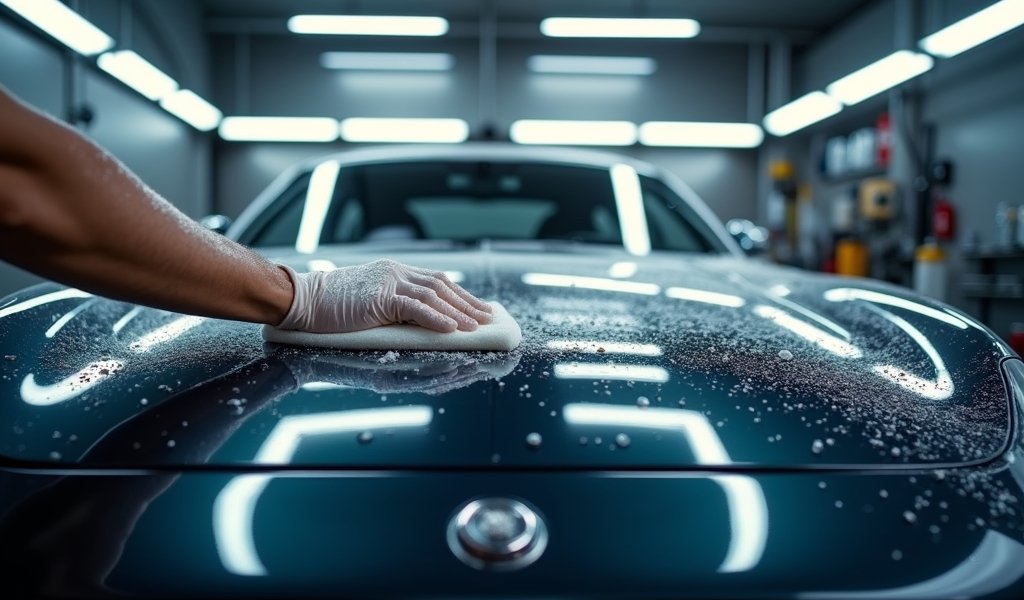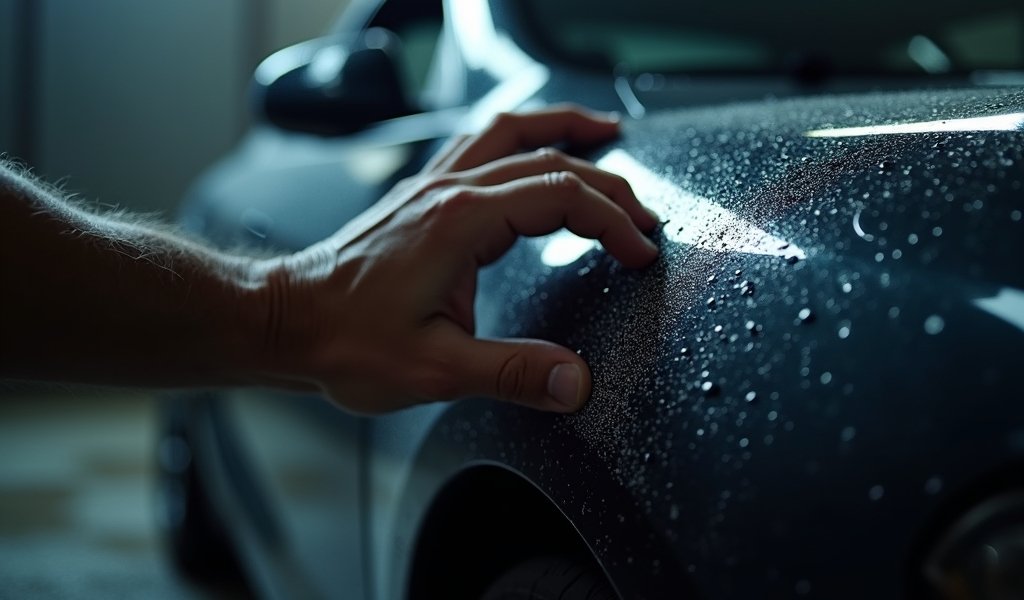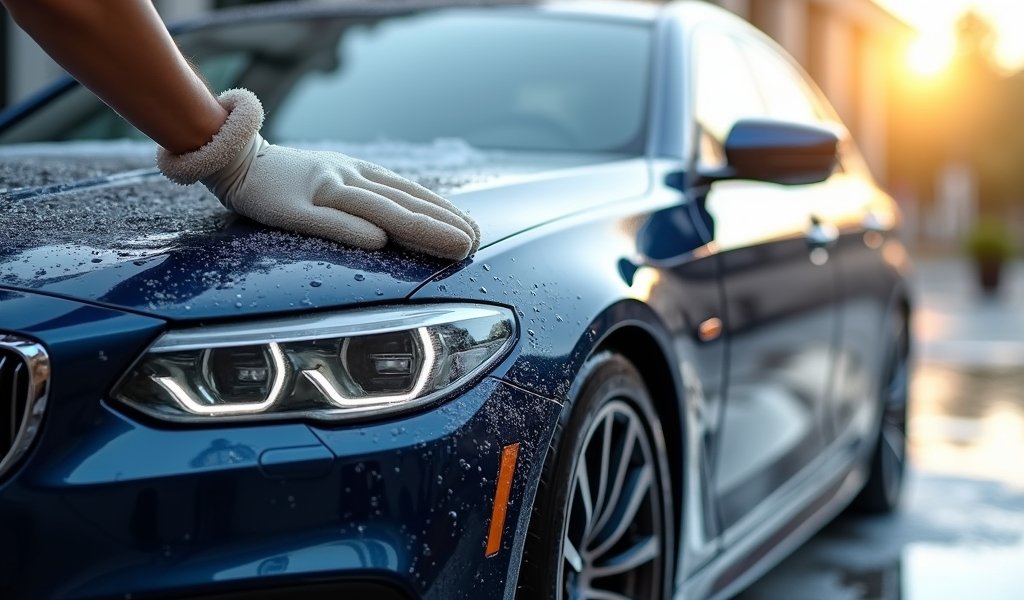Overview
This guide offers professional techniques to prevent car scratches during washing, emphasizing the two-bucket method, proper washing tools (microfiber mitts, pH-balanced car soap), and gentle drying techniques. It recommends washing from top to bottom using straight lines with minimal pressure, followed by applying protective coatings like wax, sealants, or ceramic coatings to create a sacrificial barrier against future damage.
Table of Contents
- Understanding Car Scratches: Why They Happen
- Pre-Wash Preparation: Setting Yourself Up for Success
- The Two-Bucket Method: Your Paint’s Best Friend
- Choosing the Right Products: Quality Matters
- Proper Washing Techniques: The Devil’s in the Details
- Drying Methods That Won’t Scratch Your Finish
- Touchless Washing Options: When to Consider Them
- Long-Term Protection Strategies
- Conclusion
- Frequently Asked Questions
Your car’s paint is like its skin – sensitive, vulnerable, and surprisingly easy to damage during what should be a routine cleaning. After 20 years working as an automotive paint specialist, I’ve seen countless vehicles with swirl marks and scratches caused by improper washing techniques. The good news? Most of these issues are completely preventable.
Whether you’re washing a brand-new Tesla or a well-loved family SUV, the principles of scratch-free cleaning remain the same. In this guide, I’ll share professional techniques that will help you keep your car’s finish looking showroom-fresh without risking those frustrating swirl marks that catch the sunlight in just the wrong way.
Let’s dive into everything you need to know about giving your car the gentle, effective clean it deserves. Your vehicle is an investment worth protecting, and with these car wash tips to avoid scratches, you’ll be able to maintain that glossy finish for years to come.
Understanding Car Scratches: Why They Happen
Before we jump into prevention, let’s understand what we’re up against. Most washing-related scratches happen because of one simple fact: dirt is abrasive. When you drag particles of dirt across your paint surface, they act like tiny pieces of sandpaper.
Modern automotive paint consists of multiple layers – a primer, base coat (color), and clear coat. Most scratches affect only the clear coat, which is designed to protect your paint but is surprisingly vulnerable to improper washing techniques.
The most common causes of wash-induced scratches include:
- Using dirty or abrasive washing tools (old sponges, cotton towels, brushes)
- Washing in circular motions that create visible swirl marks
- Failing to rinse off loose dirt before scrubbing
- Using household cleaners like dish soap that strip protective waxes
- Drying with rough or dirty towels
The frustrating part? These scratches build up over time. What starts as barely noticeable micro-scratches eventually becomes a dull, swirled finish that lacks the depth and gloss your car had when new. According to Consumer Reports, improper washing is among the most common causes of paint damage that leads to premature aging of your vehicle’s finish.

Pre-Wash Preparation: Setting Yourself Up for Success
A scratch-free wash begins before you even touch the car. Proper preparation makes all the difference between preserving your paint and inadvertently damaging it.
First, timing matters. Choose an overcast day or wash in the shade when the car’s surface is cool to the touch. When your paint is hot, soap and water dry too quickly, leaving residue that requires more aggressive scrubbing to remove – increasing scratch risk.
Next, gather the right supplies:
- Two large wash buckets (preferably 5-gallon size)
- Grit guards for each bucket
- pH-balanced car wash soap (never dish detergent)
- Several microfiber wash mitts
- Clean microfiber drying towels (at least 3-4)
- A dedicated wheel cleaning brush or mitt
- A gentle spray nozzle or pressure washer
Before applying any soap, thoroughly rinse the entire vehicle from top to bottom. This pre-rinse is crucial – it removes loose dirt and debris that could otherwise become scratching agents. Pay extra attention to lower panels, wheel wells, and behind the wheels where road grime accumulates.
This simple pre-wash step can dramatically reduce scratching potential by eliminating larger particles before your mitt ever touches the paint. I’ve seen this step alone make a significant difference in maintaining paint clarity over time.
The Two-Bucket Method: Your Paint’s Best Friend
If there’s one technique that separates professional detailers from casual car washers, it’s the two-bucket method. This simple approach can slash your chances of creating swirl marks by up to 80% according to many professional detailing guides.
Here’s how it works:
- Bucket #1: Fill with water and car wash soap according to directions
- Bucket #2: Fill with clean water only – this is your rinse bucket
- Place grit guards in the bottom of both buckets if available
The process is straightforward but incredibly effective:
- Dip your clean wash mitt into the soap bucket
- Wash a small section of the car (about 2×2 feet)
- Rinse your mitt thoroughly in the rinse bucket, working it against the grit guard
- Return to the soap bucket and repeat
This method works because it prevents you from reintroducing dirt from your mitt back onto the paint surface. The grit guards help separate dirt from your mitt and keep it at the bottom of the bucket where it can’t be picked up again.
I’ve tried various DIY car wash methods at home, and nothing beats the two-bucket approach for preventing scratches while still getting a thorough clean. If you’re serious about protecting your car’s finish, this technique is non-negotiable.
Choosing the Right Products: Quality Matters
The tools you use make an enormous difference in preventing scratches. This isn’t an area to pinch pennies – quality products pay for themselves by protecting your much larger investment in your vehicle.
Let’s start with wash mitts. Microfiber wash mitts are the gold standard because they lift and trap dirt rather than pushing it across your paint. The plush fibers create thousands of tiny pockets that hold dirt away from the paint surface. Natural lambswool mitts are another excellent option, though typically more expensive.
For soap, look for pH-balanced formulas specifically designed for automotive use. These products provide adequate lubrication to help particles slide off your paint rather than scratching it. Many quality car shampoos also contain polymers that enhance gloss while cleaning. The best car wash soaps for shine will clean effectively without stripping existing wax or sealant.
What to avoid at all costs:
- Kitchen sponges or brushes
- Household towels or rags
- Dish soap or all-purpose cleaners
- Sponges or mitts that have been dropped on the ground
One pro tip I’ve learned through years of detailing: keep separate washing tools for different areas of the car. The mitt you use on dirty wheels should never touch your paint. This simple practice prevents cross-contamination that can lead to scratches.
Proper Washing Techniques: The Devil’s in the Details

Even with the best products, poor technique can still lead to scratches. Let’s look at the specific methods that will keep your paint pristine.
Always start at the top and work your way down. Your car’s roof and upper panels are typically the cleanest, while lower areas collect more road grime and contaminants. By starting at the top, you prevent dragging heavier dirt from lower panels across cleaner upper surfaces.
Wash in straight lines, not circles. Circular motions are the main culprit behind those swirl marks that become visible in direct sunlight. Straight, overlapping passes distribute pressure more evenly and are less likely to create noticeable patterns in your clear coat.
Let the products do the work – don’t apply pressure. Your mitt should glide across the surface with minimal pressure. I always tell my customers to imagine you’re washing a butterfly’s wings – that’s how gentle you should be. The soap’s lubrication and your mitt’s microfiber or wool fibers are doing the cleaning, not force.
Rinse your mitt frequently – ideally after each panel. This prevents dirt buildup that increases scratching risk. If you notice your mitt getting particularly dirty, consider switching to a clean one halfway through the wash.
When it’s time for the wheels and tires, use dedicated tools and cleaners designed for these surfaces. Brake dust is particularly abrasive and can easily scratch paint if transferred via your washing tools.
These DIY car detailing tips may take slightly longer than a rushed wash job, but the results speak for themselves – a scratch-free finish that maintains its luster for years.
Drying Methods That Won’t Scratch Your Finish
The drying phase is where many car owners unknowingly create scratches after a careful wash. Water spots aren’t just unsightly – they can actually etch into your clear coat over time, making proper drying essential.
Microfiber drying towels are your best friend here. Look for plush towels with a GSM (grams per square meter) rating of 350 or higher. These towels have tremendous water absorption capacity, meaning fewer passes across your paint.
The pat-dry technique is far gentler than wiping. Instead of dragging a towel across the surface, gently place the microfiber towel on wet areas and press lightly, allowing it to absorb water through capillary action. While this method requires more towels, it virtually eliminates drying-related scratches.
For the ultimate in scratch-free drying, consider a car-specific air blower or leaf blower. These tools force water off the surface without any physical contact with your paint. They’re particularly useful for hard-to-reach areas like side mirrors, door jambs, and around badges.
If you use a drying aid (a quick detailer sprayed on while drying), you’ll further reduce friction between your towel and the paint surface. These products add lubrication and help prevent those last few droplets from causing water spots.
Remember to change or flip your drying towel frequently as it becomes saturated. A wet towel loses its absorption properties and increases drag across your paint – exactly what we’re trying to avoid.
Touchless Washing Options: When to Consider Them
Sometimes, the safest wash is the one with minimal contact. Touchless options have their place in a comprehensive car care strategy, especially for maintenance washes between more thorough cleanings.
Commercial touchless car washes use high-pressure water and specialized chemicals to clean without physical contact. While they eliminate mechanical scratch risks, they have downsides – the harsh chemicals can degrade wax protection, and they may not clean as thoroughly as a proper hand wash.
Rinseless wash products have revolutionized at-home car care. Products like Optimum No Rinse use polymers that encapsulate dirt particles, allowing them to be safely wiped away with minimal water. When used with plush microfiber towels and proper technique, these products can provide a safe wash with remarkably little water.
Waterless wash products (spray-on, wipe-off formulas) are best reserved for vehicles with very light soiling. They provide convenience but carry higher scratch risk on dirty surfaces.
Consider touchless options when:
- Your vehicle is only lightly dusty or dirty
- You’re facing water restrictions
- You need a quick maintenance wash between more thorough cleanings
- You’re traveling and need to clean your car away from home
For heavily soiled vehicles, however, a proper two-bucket wash remains the safest and most effective cleaning method. No touchless system can match the cleaning power and safety of proper washing technique combined with quality products.
Long-Term Protection Strategies
The best defense against scratches is a good offense. Adding protective layers to your paint creates a sacrificial barrier that takes the abuse instead of your clear coat.
Waxing your car every 2-3 months provides an essential layer of protection. Quality carnauba waxes or synthetic wax alternatives create a hydrophobic surface that repels water and makes subsequent washing easier as dirt adheres less strongly.
Paint sealants offer similar protection with longer durability (4-6 months). These synthetic products bond more strongly to your paint than traditional waxes, providing extended protection against the elements and minor abrasions during washing.
For serious protection, ceramic coatings represent the pinnacle of paint defense. These silicon dioxide-based products chemically bond to your paint, creating a rigid, glass-like layer that can last 1-5 years depending on the formula and application. They offer superior hardness, chemical resistance, and hydrophobic properties that make washing significantly easier and safer.
Paint protection film (clear bra) provides physical protection against road debris, bug acids, and light scratches. Modern films are nearly invisible and many feature self-healing properties that allow minor marring to disappear with heat exposure.
Whichever protection you choose, remember that it needs maintenance. Even the most durable ceramic coating benefits from proper washing technique. Think of these products as enhancing your protection, not eliminating the need for careful washing.
Conclusion
Keeping your car scratch-free isn’t rocket science, but it does require knowledge, the right tools, and a bit of patience. The techniques we’ve covered – from the two-bucket method to proper drying – are the same ones used by professional detailers charging hundreds of dollars for their services.
The most important takeaway? Prevention is always easier than correction. Once scratches appear, removing them requires compounds, polishes, and potentially professional help. By implementing these car wash tips to avoid scratches, you’re not just maintaining your vehicle’s appearance – you’re preserving its value.
Remember that consistency matters more than perfection. Adopt these techniques as your standard approach, and you’ll see dramatic improvements in your paint’s condition over time. Your car is one of your largest investments – it deserves care that protects rather than degrades its finish.
Now that you’re armed with professional-grade washing knowledge, you can enjoy that deep, glossy shine that turns heads for years to come – scratch-free, just as the factory intended.
Frequently Asked Questions
Is it better to wash my car by hand or take it to an automatic car wash?
Hand washing using proper techniques is always safer for your paint than automatic car washes with brushes. Touchless automatic washes are better than brush systems but still use harsh chemicals that can degrade wax protection.
How often should I wash my car to prevent paint damage?
Regular washing every 1-2 weeks prevents contaminants from bonding to your paint and causing damage. In areas with high pollution, road salt, or bird droppings, more frequent washing may be necessary.
Can I use dish soap to wash my car in a pinch?
Dish soap should be avoided as it strips protective waxes and sealants from your paint. If absolutely necessary, use it sparingly and apply a fresh coat of wax immediately after washing.
What’s the single most important tool for scratch-free washing?
A quality microfiber wash mitt is the most critical tool as it safely lifts dirt rather than dragging it across your paint. Pair it with the two-bucket method for maximum scratch prevention.
How can I remove existing swirl marks from my paint?
Minor swirl marks can be removed using a dual-action polisher with appropriate polish and pad combinations. Deeper scratches may require compound before polish, and severe cases might need professional correction.


Pingback: Best Microfiber Towels for Car Wash Tips - knowsyourcar.com